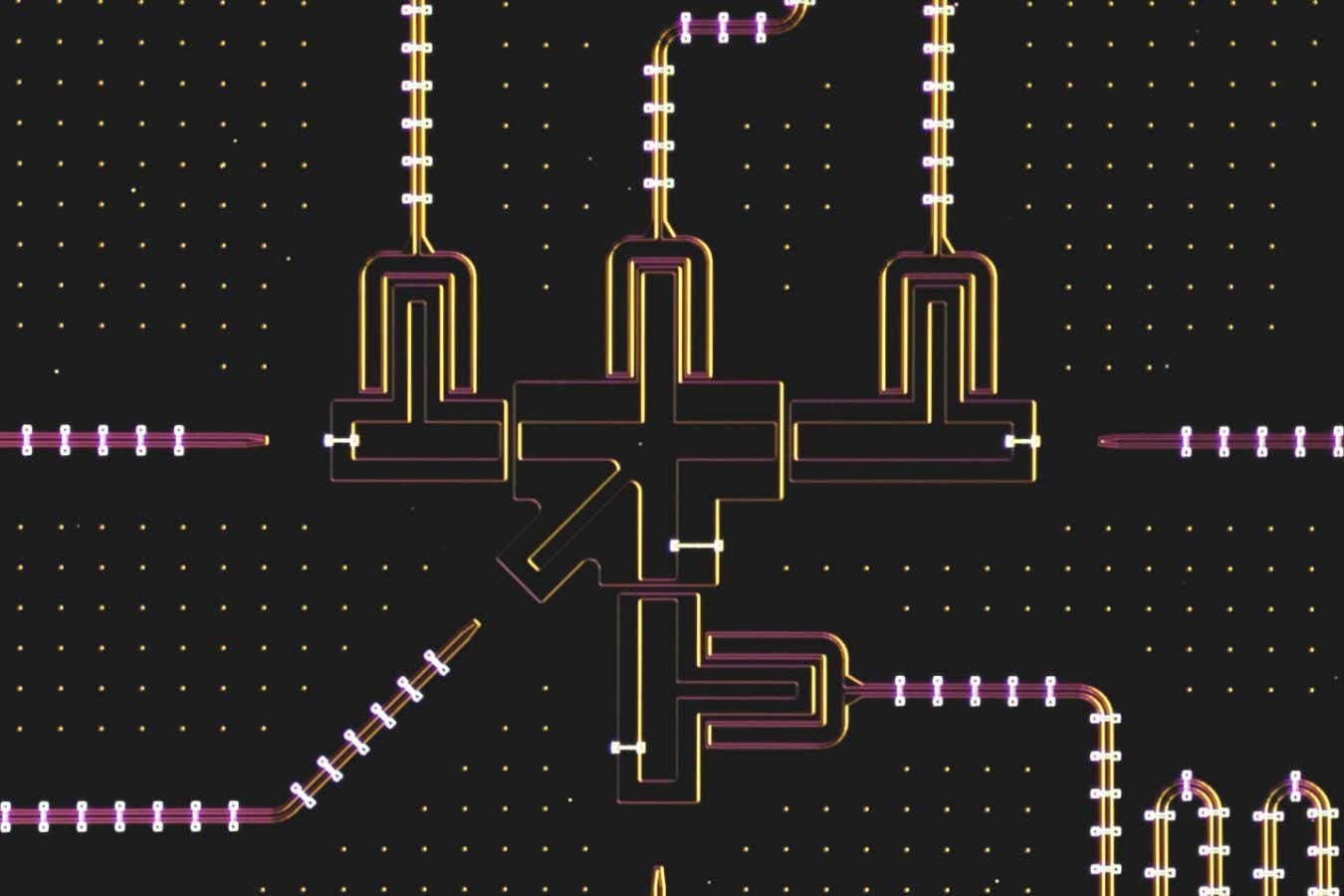A device made from superconducting qubits could prove a powerful technology for enabling practical quantum computing or more experimental propositions like quantum machine learning
By Karmela Padavic-Callaghan
8 September 2025
A false colour image of the quantum router circuit
MIT SQUILL foundry
Quantum computers may be able to run useful algorithms more quickly, thanks to a new quantum router that helps data get to the right place faster.
Traditional computers avoid becoming slow when faced with a complicated program in part by using random access memory (RAM) to temporarily store some information. The component key to building RAM’S quantum counterpart, QRAM, is a router. This isn’t the router that directs your internet queries to the right IP address, but rather an internal router that directs informational traffic inside a computer.
Read more
Google's claim of quantum supremacy has been completely smashed
Advertisement
Connie Miao at Stanford University in California and her colleagues have now built such a device. “The project was motivated by algorithms that use QRAM. There were a lot of papers basically coming out saying: ‘If we had a QRAM, we could do XYZ,’ but this hadn’t been shown [experimentally],” she says.
The new router consists of qubits, the basic building blocks of all quantum computers and quantum memories, made from tiny superconducting circuits and controlled by electromagnetic pulses. Similar to a traditional router, this quantum one sent quantum information to quantum addresses. What distinguishes the device as being fully quantum is that it allows the address to be encoded not just in one place but in a superposition of two. The team tested this with three qubits and found the routing to have about 95 per cent fidelity.
This means that if it were incorporated into a QRAM, the device could push information into a quantum state where it is impossible to say which of the two locations it is stored in – exactly the kind of phenomenon believed to make quantum computers powerful.
